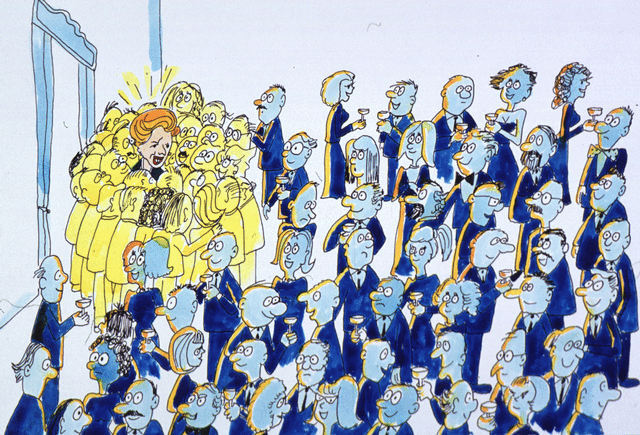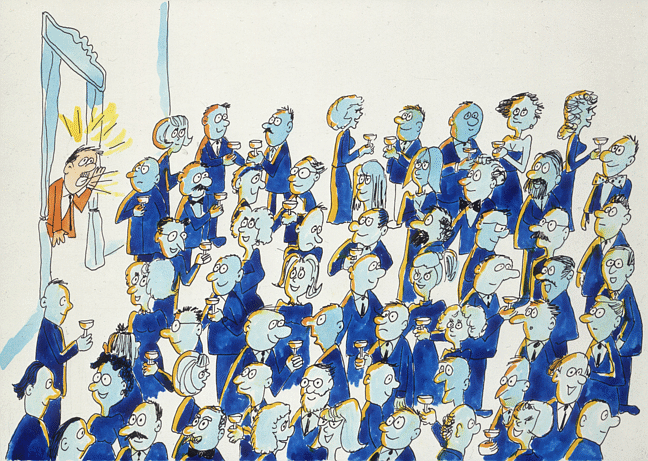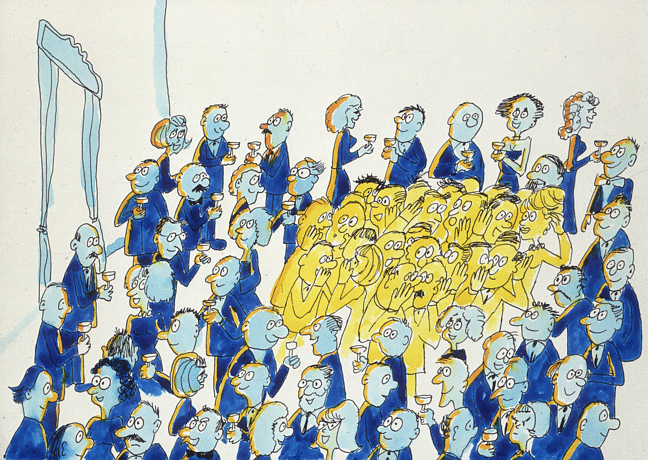I don't think I really need to say anything more about it than please, go and look. Our galaxy is a beautiful place.
Wednesday 8 September 2010
If I had eyes that could see...
I was just sent this beautiful image, used to illustrate a piece on BBC News on spiral galaxies. I had a look on the source website, and they have the original image in all its hugeness (and convenient wallpaper sizes) available to download.
Tuesday 7 September 2010
A quasi-political Explanation of the Higgs Boson
This explanation of the Higgs mechanism and boson theories was written by David J Miller (then of UCL) to enlighten the UK science minister Mr Waldegrave in 1993. This has been something that's bugged me I've not got around to finding out about, and I find the analogy very elegant...
from David J. Miller, Physics and Astronomy, University College London.
(cartoons courtesy of CERN).
1. The Higgs Mechanism
Imagine a cocktail party of political party workers who are uniformly distributed across the floor, all talking to their nearest neighbours. The ex-Prime- Minister enters and crosses the room. All of the workers in her neighbourhood are strongly attracted to her and cluster round her. As she moves she attracts the people she comes close to, while the ones she has left return to their even spacing. Because of the knot of people always clustered around her she acquires a greater mass than normal, that is, she has more momentum for the same speed of movement across the room. Once moving she is harder to stop, and once stopped she is harder to get moving again because the clustering process has to be restarted.
In three dimensions, and with the complications of relativity, this is the Higgs mechanism. In order to give particles mass, a background field is invented which becomes locally distorted whenever a particle moves through it. The distortion - the clustering of the field around the particle - generates the particle's mass. The idea comes directly from the Physics of Solids. Instead of a field spread throughout all space a solid contains a lattice of positively charged crystal atoms. When an electron moves through the lattice the atoms are attracted to it, causing the electron's effective mass to be as much as 40 times bigger than the mass of a free electron. The postulated Higgs field in the vacuum is a sort of hypothetical lattice which fills our Universe. We need it because otherwise we cannot explain why the Z and W particles which carry the Weak Interactions are so heavy while the photon which carries Electromagnetic forces is massless.
2. The Higgs Boson.
Now consider a rumour passing through our room full of uniformly spread political workers. Those near the door hear of it first and cluster together to get the details, then they turn and move closer to their next neighbours who want to know about it too. A wave of clustering passes through the room. It may spread out to all the corners, or it may form a compact bunch which carries the news along a line of workers from the door to some dignitary at the other side of the room.
Since the information is carried by clusters of people, and since it was clustering which gave extra mass to the ex-Prime Minister, then the rumour-carrying clusters also have mass. The Higgs boson is predicted to be just such a clustering in the Higgs field. We will find it much easier to believe that the field exists, and that the mechanism for giving other particles mass is true, if we actually see the Higgs particle itself. Again, there are analogies in the Physics of Solids. A crystal lattice can carry waves of clustering without needing an electron to move and attract the atoms. These waves can behave as if they are particles. They are called phonons, and they too are bosons. There could be a Higgs mechanism, and a Higgs field throughout our Universe, without there being a Higgs boson. The next generation of colliders will sort this out.
from David J. Miller, Physics and Astronomy, University College London.
(cartoons courtesy of CERN).
Subscribe to:
Posts (Atom)




